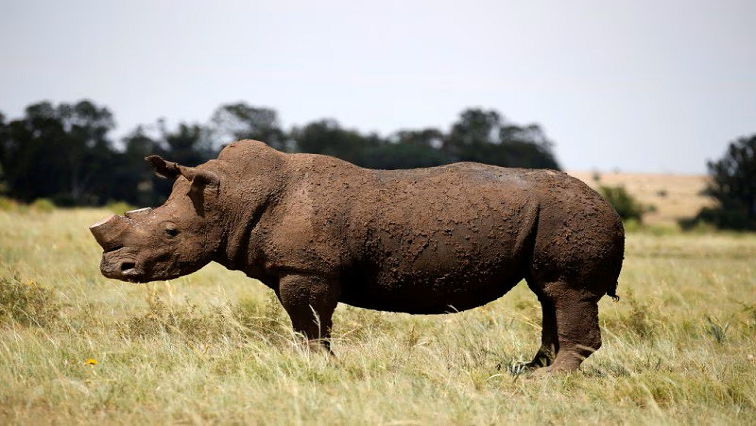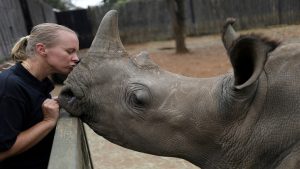A 20-year-old South African black rhino programme is bringing hope to its critically endangered species status. The World Wildlife Fund (WWF) of South Africa’s Black Rhino Range Expansion Project works with community landowners and state conservation agencies to increase the numbers of the black rhino population.
Poaching largely dropped these from about 100 000 in the 1960s to fewer than 2 500 by the mid-1990s.
Black rhinos are the smaller of the two African rhino species, easily identified by their hooked upper lips, allowing them to feed on leaves from bushes and trees. They are the more solitary of the two species.
WWF South Africa’s Black Rhino Range Expansion Project has been working for 20 years to grow the number of black rhinos in Africa.
During this time, it’s created over 200 rhino calves in 15 new population groups, making up about 14% of SA’s black rhino population. Veterinarian Dr Jacques Flamand, the project’s technical advisor speaks to the behind the scenes work that require meticulous planning and strategy:
“Not only identifying the land and persuading the landowners to participate but also getting permits to move these animals, getting the conservation agencies Ezelvemo KZN and Eastern Cape Parks to agree on my selected sites; so that all takes time. There’s a whole bureaucratic process that needs to take place and then of course the actual move of the rhino takes two weeks of the year, and that’s the most fun part but the most important obviously.”
Airlifting rhinos
Initially about 20 black rhino were removed from state conservation agencies to be relocated to community landowners. At least 200 square kilometeres of land is necessary.
Half of the progeny — or descendants of each animal — remains with the invested landowner, and the other half are returned to state conservation agencies, where they were removed from in KwaZulu-Natal and the Eastern Cape.
Flamand explains about the success of airlifting rhinos; an idea that he attributes to his colleague Peter Moko.
“We actually try to do as many rhino as we can afford to do, to actually get rhino out of very difficult terrain because a lot of our reserves don’t have roads everywhere. So it’s easier to just lift them out of where they are to waiting vehicles and we’ve done it every single year to great effect. The only drawback is that it costs a lot of money. But nevertheless its worth it because the welfare of the rhinos is paramount. We want healthy rhinos to be released.”
Successful translocation
Flamand says there was a successful translocation of 17 black rhinos to Malawi.
“We carried 17 black rhino by single plane to Malawi that all went fine. And then the trip from the airport to Kwa National Park took quite a long time and it was incredibly hot so there were huge concerns about the health of the rhino that that they would suffer heat stress and so on but they all arrived safely and were released.”
Looking ahead, the project’s population manager, Ursina Rusch, says careful management of its DNA repository to ensure genetic diversity to breed healthy rhinos is critical.
“So it allows us to understand which dominant bulls are breeding and fathering offspring, and it gives us a better idea to manage these populations more pragmatically by making sure we are removing dominant bulls once their offspring have come of age. So we don’t see dominant bulls mating with their own daughters and it also allows us to make sure that siblings that are growing up, that we are able to remove one or the other out of the population to make sure there is no inbreeding. So genetic management has become increasingly important the older BRREP and the BRREP sites get.”
Flamand has emphasised that the programme has not been exempt from poaching, losing 35 rhinos. He says however, that dehorning is a working strategy to deter poachers.
SA, African continent grapple with ongoing rhino poaching challenge: Dr Jacques Flamand:





